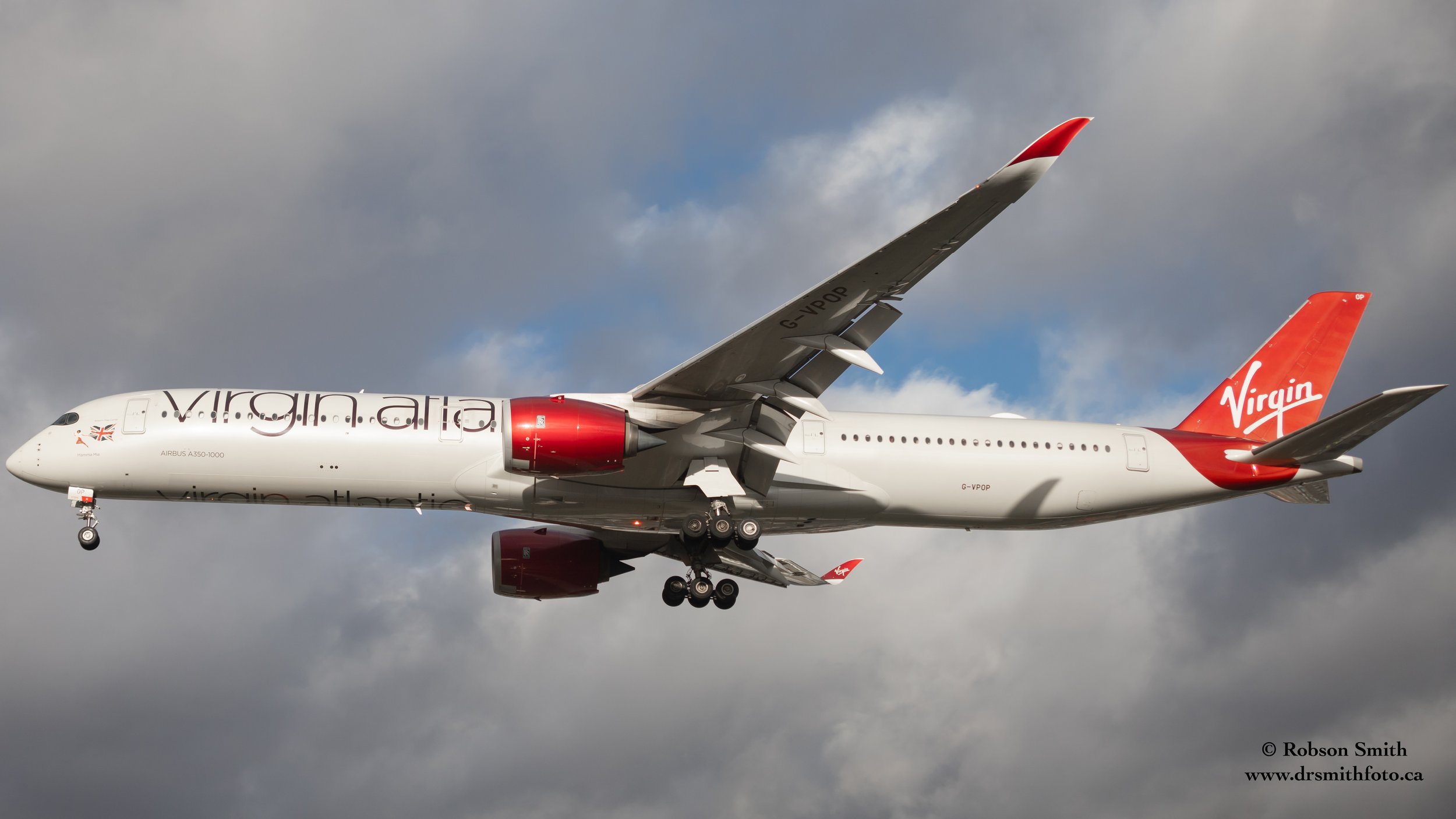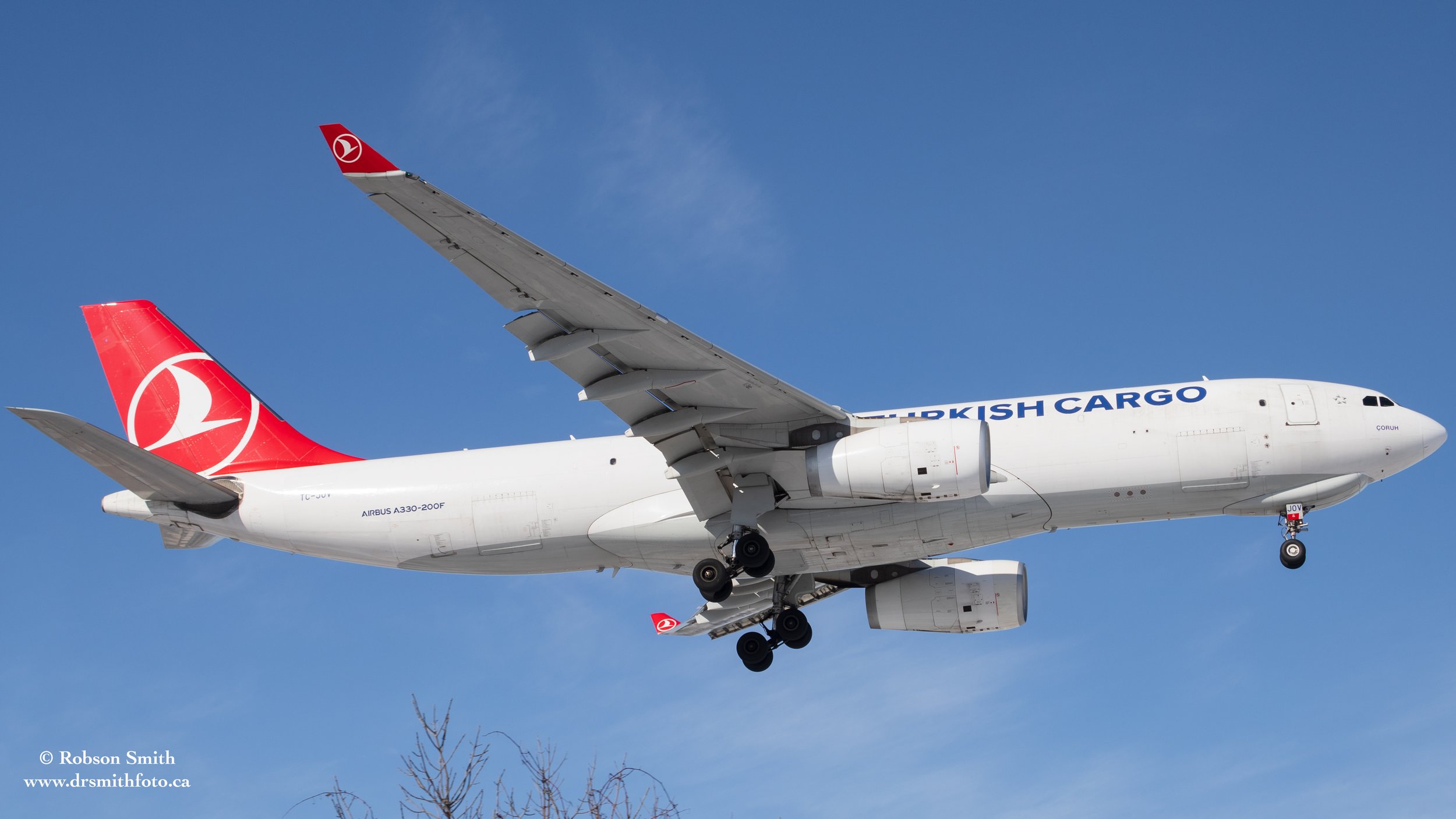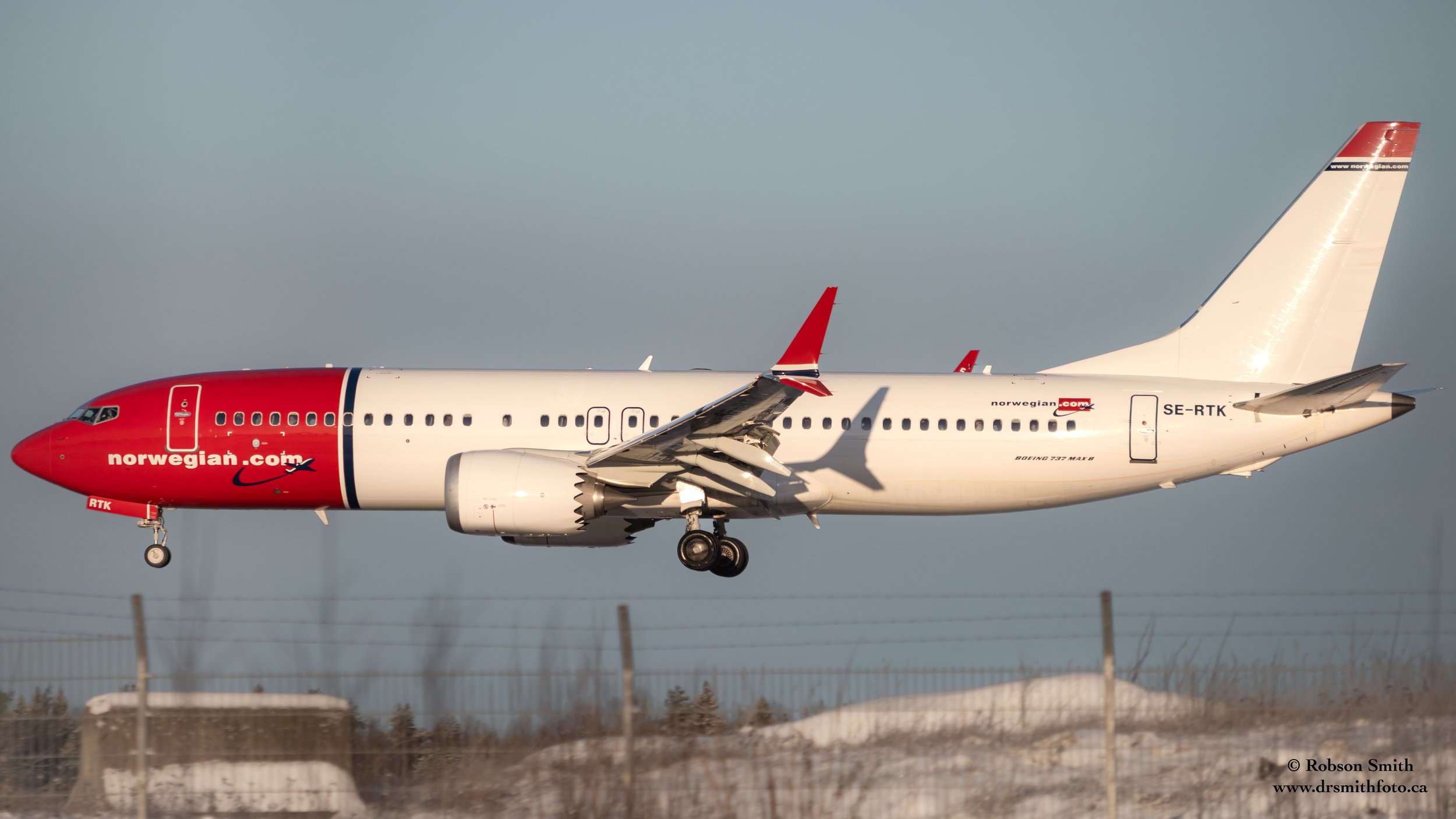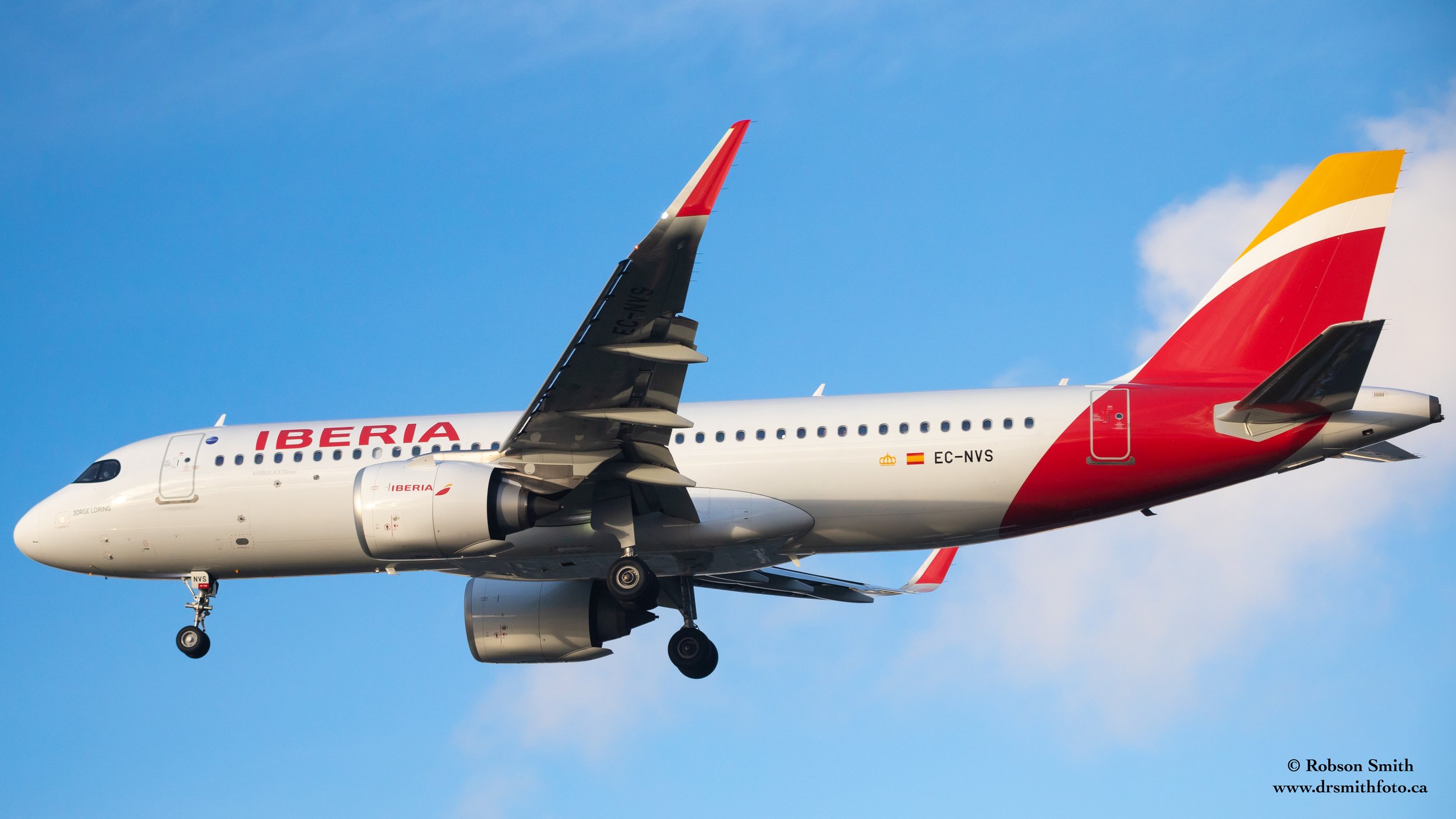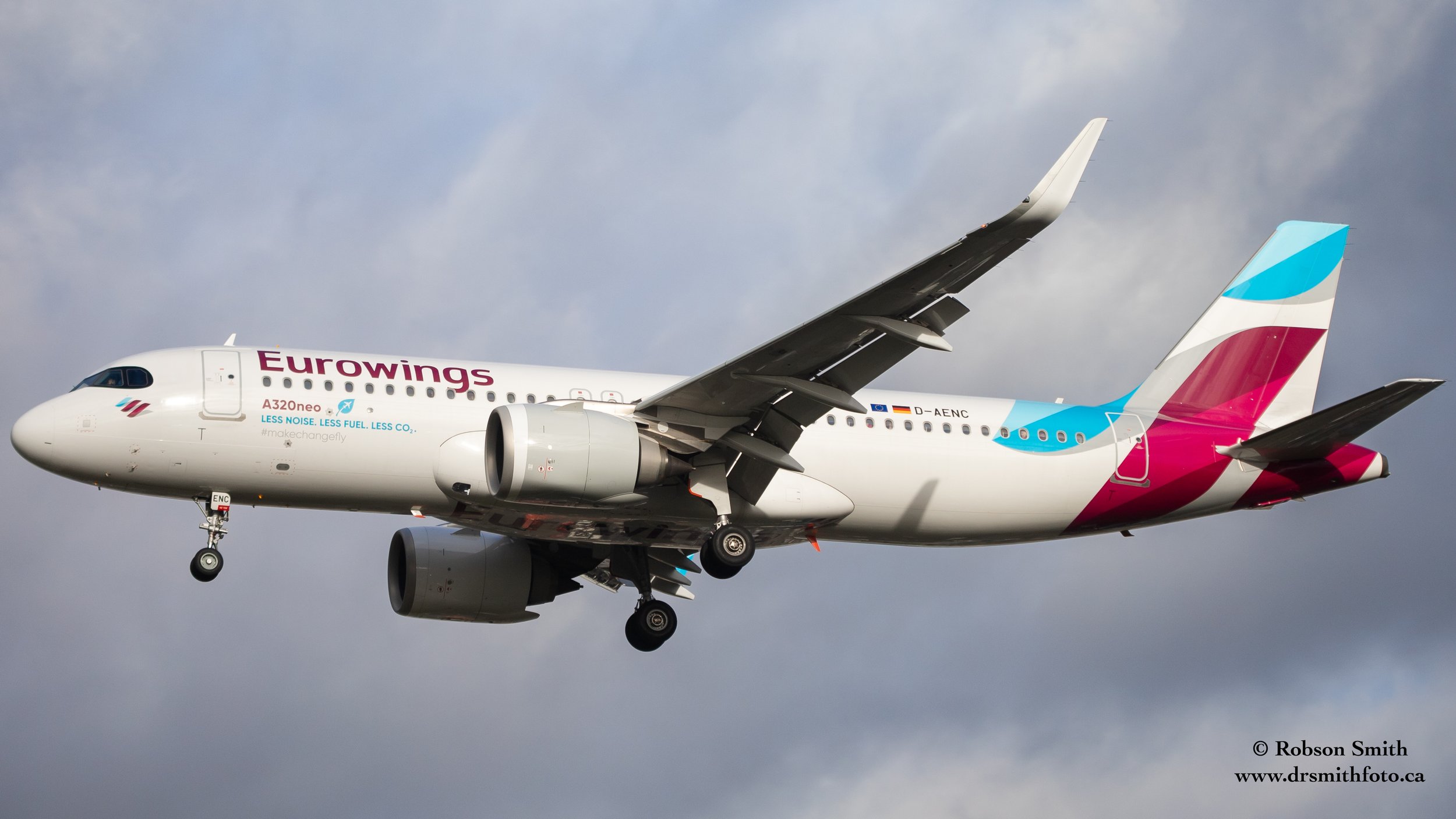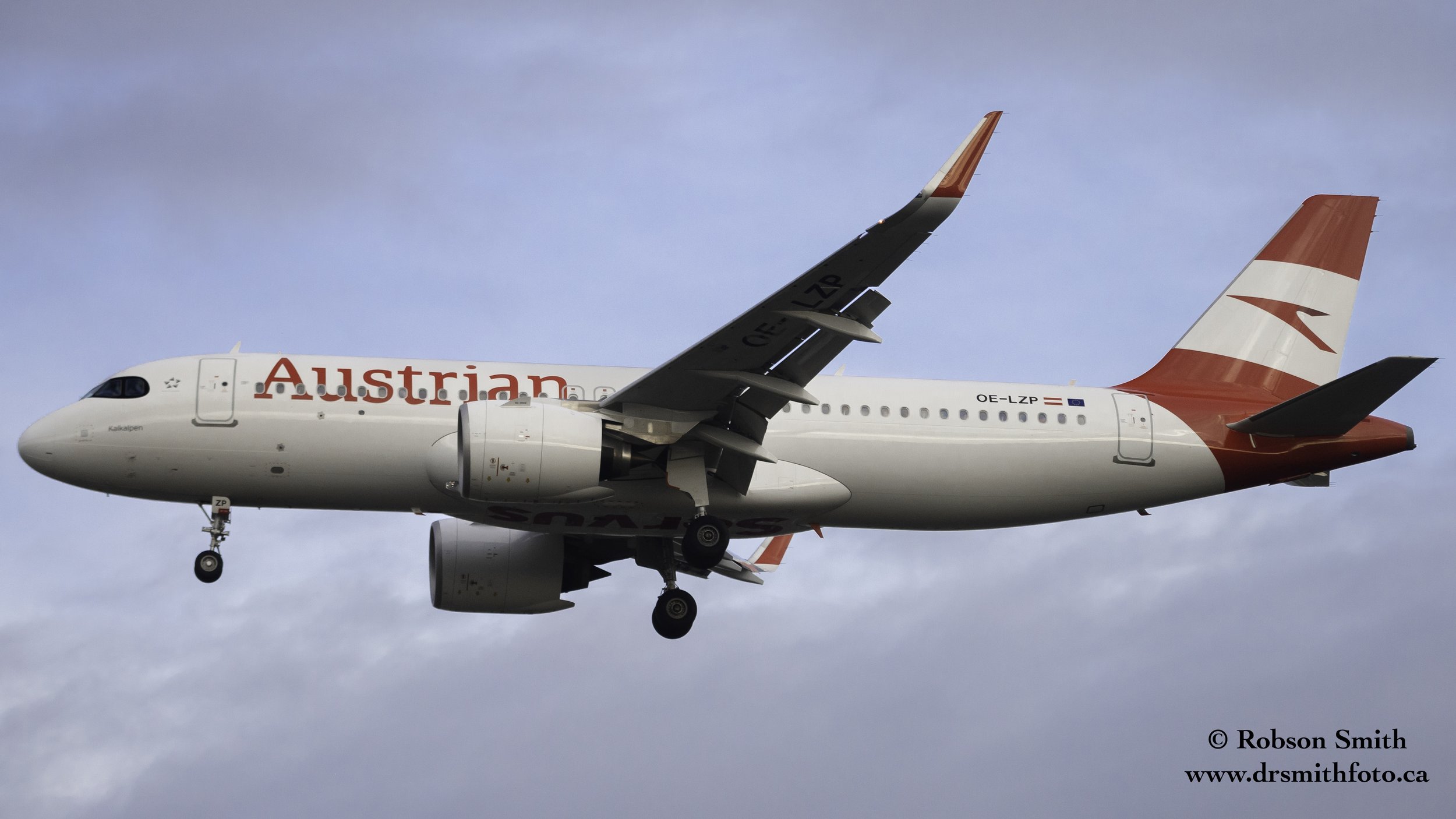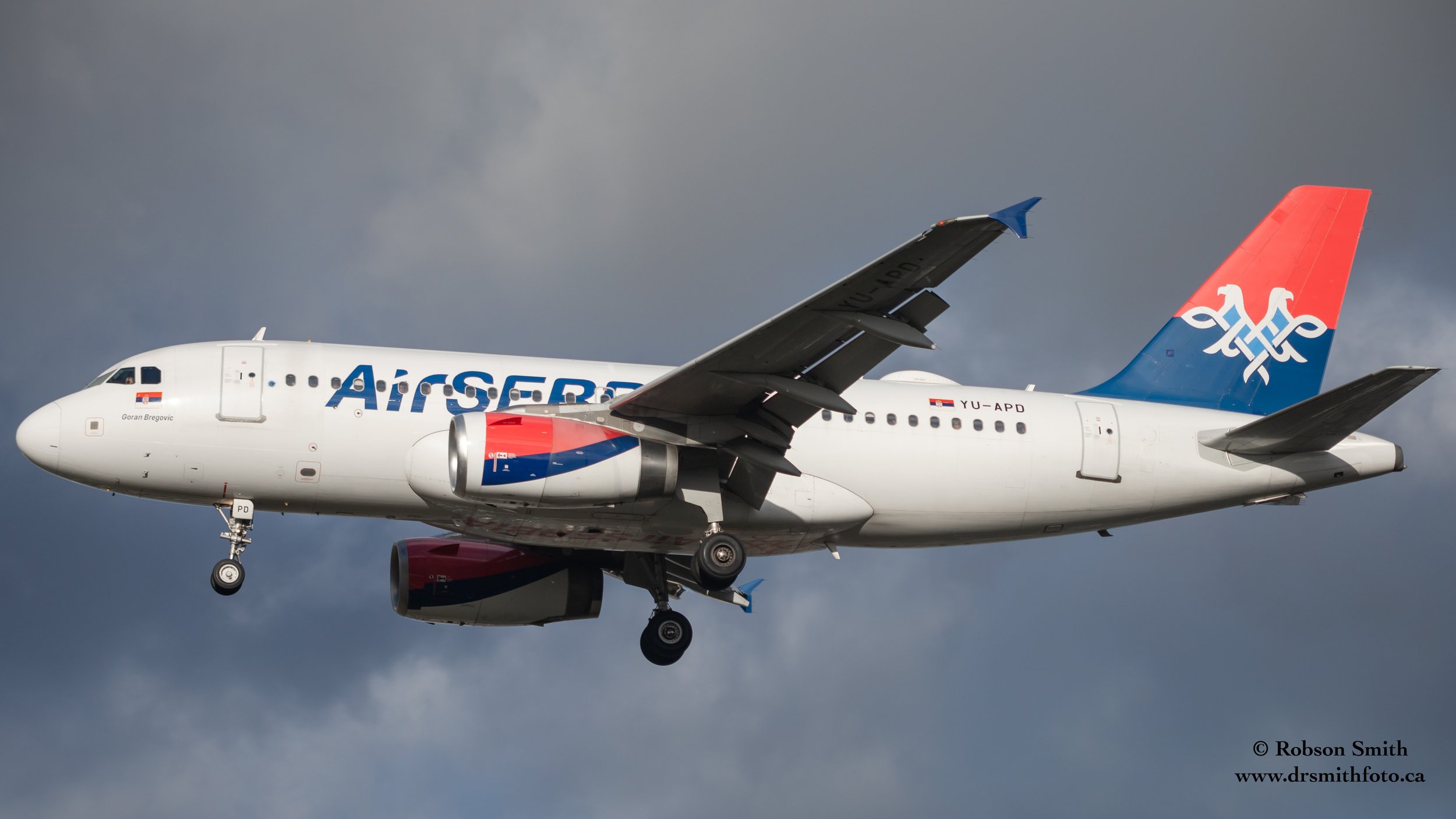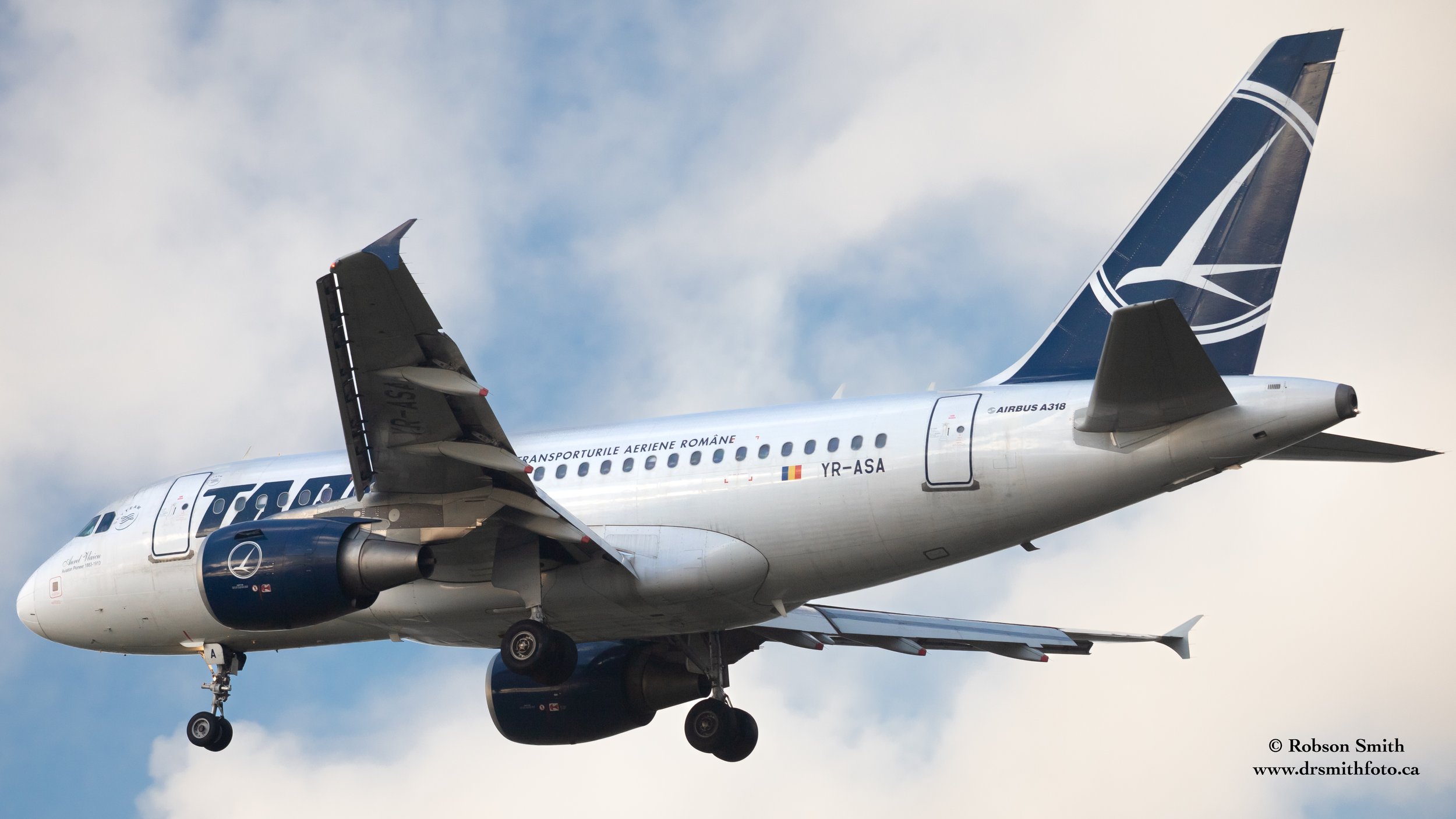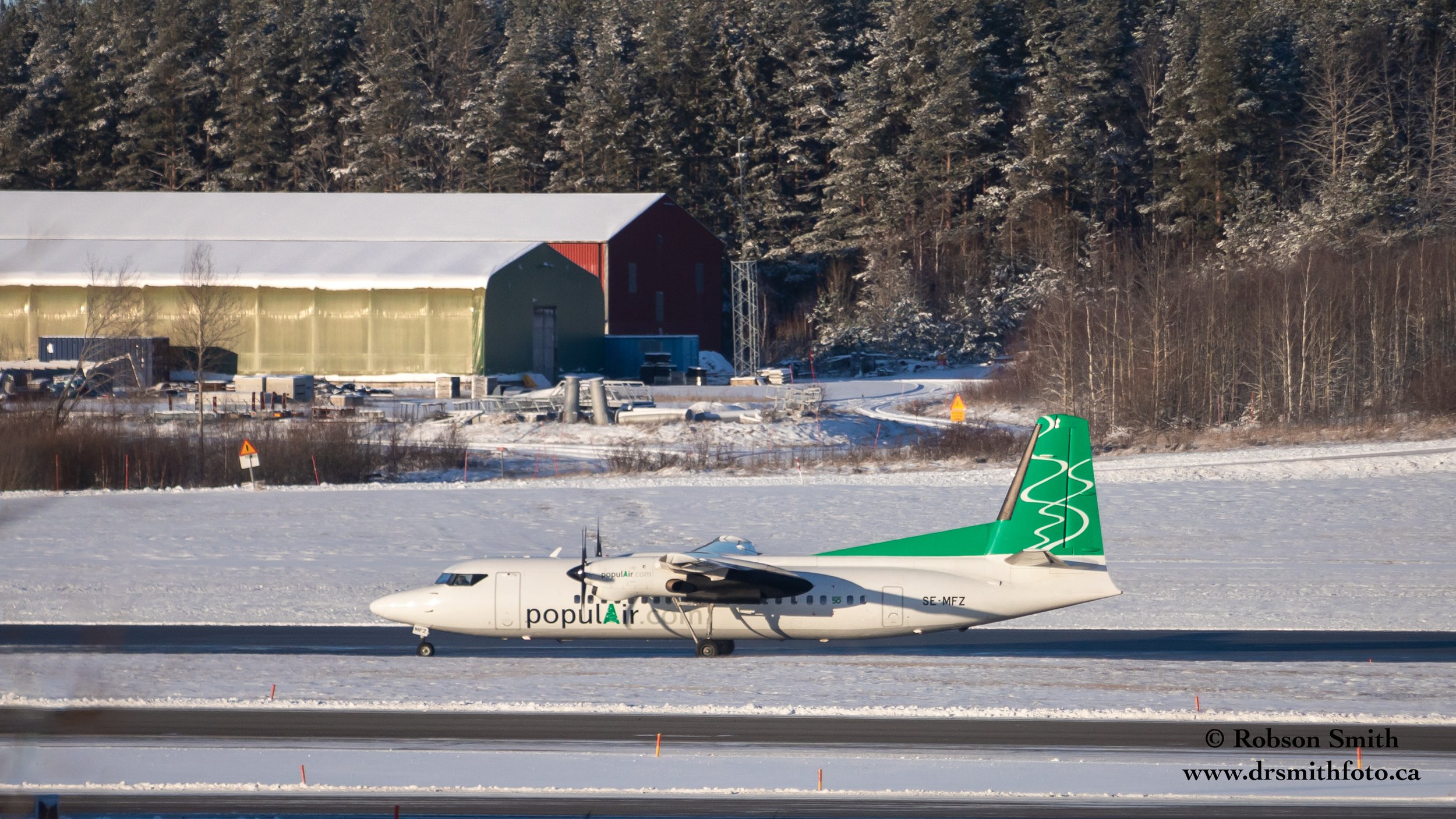Airlines of Europe
With the first airline in history - DELAG, operating blimps out of Germany- Europe continues to inspire us with its rich history - many flag carriers are approaching or over the 100 year mark - and diversity with hundreds of airlines to see.
KLM
KLM was founded in 1919 as “Koninklijke Luchtvaart Maatschappij,” meaning “Royal Aviation Company” and is the world’s oldest airline operating under its original name. KLM first flew in 1920 between Croydon Airport, London, and Amsterdam, and in 1946, KLM became the first airline to operate scheduled flights between continental Europe and New York. KLM then received its first 747 in 1971 and its first 747-400 in 1989. KLM retired their last 747 in 2023. Currently, KLM and Air France form the AF-KLM Group, saving the airlines hundreds of millions of dollars.
Above is a now retired Boeing 747-400 (PH-BFY) named Johannesburg arriving at Toronto Pearson (YYZ) from Amsterdam Schiphol International Airport (AMS)
Air Belgium
Air Belgium, founded in 2016, first flew in March of 2018 with a fleet of four Airbus A340-300s. At the time of this image - July 2019 - two of these planes were wet leased to other airlines - LOT Polish Airlines and, British Airways, which is operating this flight to minimize the disruption to their long haul flights resulting from precautionary inspections on the Rolls Royce Trent 1000 engines equipped for their 787-9 aircraft, requiring the temporary grounding of the 787-9 that usually operates this route. Air Belgium has now transition to a charter and cargo only airline.
Above is an Airbus A340-300 (OO-ABB) operating for British Airways arriving at Toronto Pearson (YYZ) from London Heathrow (LHR)
Aerologic
Aerologic was founded in 2009 as a joint venture with a unique 50/50 split between Lufthansa and DHL. Due to DHL's 50% split, AeroLogic is part of the DHL group - one of the world's largest logistics companies, which moves over one billion parsecs per year and employs over half a million workers. Logistically, the airline splits operational use between the two partners (DHL and Lufthansa) at different times during the week. Lufthansa retains the use over the weekends on behalf of Lufthansa cargo, typically flying to America or Canada and DHL Express serves to Asia during the weekdays.
Above is a Boeing 777F (D-AALG) arriving at Toronto Pearson (YYZ) from Frankfurt Airport (FRA)
Ukraine International Airlines (UIA)
Ukraine International Airlines, formerly the flag carrier of Ukraine and now privatized, was launched in 1992, following the fall of the Soviet Union. It replaced Ukraine Airlines, which served Ukraine under the Soviet Union as a subsidy of AeroFlot, the Soviet Union’s - and now Russia’s - national carrier. UIA is currently grounded and mostly dissolved until Ukrainian Airspace is reopened to commercial aviation. Interestingly, UIA was popular globally due to its low prices, even though it isn’t a budget airline and had massive plans for fleet modernization.
Above is a Boeing 777-200ER (UR-GOC) arriving at Toronto Pearson (YYZ) from Kyiv Boryspil International Airport (KBP)
Virgin Atlantic Airways
Virgin Atlantic was established in 1984 as British Atlantic Airways and has an amusing Virgin history of mutual slander with British Airways, then British Overseas Airways. In the 1980s, Virgin’s owner, Richard Branson, installed a “BA doesn’t give a shiatsu” sign at LHR and a “BA can’t get it up” blimp over London. BA’s “Dirty Tricks” scandal of the ‘90s followed, which involved illegally accessing Virgin’s flight data, impersonating Virgin employees, and convincing their customers to switch to BA. Virgin has since added “Britain’s Flag Carrier” (a take at BA, the UK’s de facto flag carrier) to the nose of their aircraft.
Above is an Airbus A350-1000 (G-VPOP) names ‘Mamma Mia” arriving at London Heathrow (LHR) from New York John F, Kennedy International Airport (JFK)
Lufthansa
Lufthansa was founded in 1953 after the dissolution of Germany’s pre-war flag carrier. In 1926, Deutsche Luft Hansa was created through the merger of Deutscher Aero Lloyd (airline) and Junkers Luftverkehr (aircraft manufacturer). The airline performed wartime durites during the Second World War and was entirely liquidated by the allies by the 1950s. The new Lufthansa was able to acquire rights to the name and logo of the pre-war company which it holds to this day. Interestingly, in 1967, the company launched the Boeing 737-100, the first time Boeing used a foreign launch customer.
Above is an Airbus A350-900 (D-AIXD) names “Bonn” after the western German city arriving at Toronto Pearson from Munich International Airport (MUC)
Air France
Air France was founded in 1933 via a merger between five significant French air companies, with one member, Société Générale des Transports Aériens, being the oldest commercial air transport company in France (1919). A few decades later, in 1974, Air France moved its principal operations to the brand new Charles de Gaulle Airport, where the airline finds its modern hub. Air France’s otherwise simplified eurowhite livery from 2009 retains a seahorse, on the engines, from Air Orient, one of the company's five founding members.
Above is an Airbus A350-900 (F-HTYC) arriving at Toronto Pearson from Paris CHarles de Gaulle International Airport (CDG)
Finnair
Finair is one of the oldest continually operating airlines in the world and was founded in 1927 as Aero, the flag carrier of Finland. During the Second World War, Finnair made fame as likely half of its passenger flying from domestic airports were Finnish children fleeing the war. In the early 1980s, Finnair historically operated the first direct flight from Western Europe to Japan. Due to Soviet airspace constraints, all other airlines had to stop in Anchorage or Moscow. Finnair, however, could simply fly north next to the North Pole, fitting as the “airline of Santa Claus”
Above is an Airbus A350-900 (OH-LWS) arriving at London Heathrow from Helsinki-Vantaa Airport (HEL)
LOT Polish Airlines
LOT dates back to 1922, when Aerolot, Poland’s first “regular” airline, was created. In 1928, LOT was established as Poland’s flag carrier, acquiring Aerolot and Aero, another Polish airline founded in 1925, in the process. In the 1970s, Lot inaugurated Poland’s very first transatlantic routes, and it wasn’t until the late 1980s as communism was fading from the country that the airline acquired its first western aircraft. In 2012, LOT became the European launch customer of the B787-8, on which can be found the famous crane logo, one of the oldest logos in the industry dating to the early 1930s.
Above is a Boeing 787-9 (SP-LSE) arriving at Toronto Pearson from Warsaw Chopin Airport (WAW)
Neos Airlines
LOT’s history can be traced back to 1922, when Aerolot, Poland’s first “regular” airline, was created. Then, in 1928, LOT was established as the country’s flag carrier, acquiring Aerolot in the process. Finally, in the early 1970s, Lot inaugrated Poland’s very first transatlantic routes, the first of which likely landed in Canada. More recently, in 2012, LOT became the European launch customer of the B787-8, on which can be found the famous crane logo, one of the oldest logos in the industry dating to the early 1930s.
The plane shown is a Boeing 787-9 (SP-LSE) arriving at Toronto Pearson International Airport (YYZ) from Warsaw Chopin Airport (WAW).
Turkish Airlines
Turkish Airlines was founded in 1933 as State Airlines Administration (Turkish State Airlines) and now flies to 127 countries - more than any other carrier - and a whopping 320 cities on all inhabited continents. State Airlines was renamed to Turkish Airlines in 2955, and the Istanbul-headquartered airline later crossed the Atlantic in 1961 for the first time on a 30 hour flight from Istanbul to America and now operates an impressively young fleet of over 300 aircraft. For six consecutive years, world renowned airline rating site Skytrax has dubbed Turkish Airlines as Europe's best airline (2011-2016).
Above is a Boeing 787-9 Dreamliners (TC-LLI) arriving at Toronto Pearson (YYZ) from Istanbul Airport (IST)
POP Airlines
Alitalia was founded in 1946 as Italian International Airlines. It was superseded by its privatized form in 2009 (shown) after succumbing to bankruptcy with the help of a consortium of investors who bought the brand and select assets. The post-2009 Alitalia ceased operations in 2021 due to bankruptcy again, and all it’s assets were transferred to the new state-owned carrier, ITA. “Alitalia” comes from the Italian words "Ali" (“Wings”) and "Italia" (“Italy”). Of note, since the ‘60s and until it’s end, the Pope most frequently travelled on a chartered Alitalia aircraft.
(The plane shown is a Boeing 787-800 (JY-BAE) en route to Toronto Pearson (YYZ) from Queen Alia International Airport (AMM) in Amman, the capital of Jordan.)
MNG Airlines
MNG Airlines was founded in 1997 as a Turkish cargo airline and transitioned briefly to include passenger operations in 2002 before returning to cargo and cargo-charter only flights in 2006. Interestingly, the airline’s first transatlantic flight flew between Frankfurt and Toronto in 1998 and pre-dated their American network by a year. The airline started flying with the original Airbus A300 freight variant, winning an Airbus award in 2006 for exceptional reliability with the aircraft. Their current A330F backbone fleet wasn’t introduced until 2013.
Above is an Airbus A330-300F (TC-MCN) named “Atilla Arikan” (MNG’s Planning Director) arriving at Toronto Pearson from Istanbul International Airport (IST)
Turkish Cargo Airlines
Turkish Cargo Airlines was founded with Turkish Airlines (then Turkish State Airlines) in 1933. Like its commercial counterpart, Turkish Cargo flies to more destinations than any other cargo airline in the word at 360. The company operates a fleet of 23 freight aircraft and takes advantage of cargo holds on Turkish Airlines’ fleet of over 400 commercial aircraft and has been awarded numerous awards for sustainability initiatives and excellence service. With the opening of a new cargo hub at Istanbul Airport (IST), the airline aims to fly 4.5 million tons of cargo per year.
Above is an Airbus A330-200F (TC-JOV) named “Çoruh” after the Turkish river arriving at Toronto Pearson (YYZ) from Frankfurt Airport (FRA)
Air Italy (defunct)
Air Italy was a short-lived Italian airline founded in 2018. Air Italy served as a private airline itself, with the carrier aiming to become the next flag carrier of Italy owing to its current carrier Alitalia’s financial instability. The airline has roots dating to 1963 when Alisarda was founded to serve Italian cities. The airlines operated until 1991 when it was merged with Spanish airline Universair to form Meridiana. The new airline later acquired the charter airline Air Italy, and the two were rebranded into Air Italy in 2018. Air Italy ceased operations in 2022 due to financial difficulties.
Above is an Airbus A330-200 (EI-GGP) arriving at Toronto Pearson (YYZ) from Milan Malpensa Airport (MIXP)
Alitalia (defunct)
Alitalia was founded in 1946 as Italian International Airlines. It was superseded by its privatized form in 2009 (shown) after succumbing to bankruptcy with the help of a consortium of investors who bought the brand and select assets. The post-2009 Alitalia ceased operations in 2021 due to bankruptcy again, and all it’s assets were transferred to the new state-owned carrier, ITA. “Alitalia” comes from the Italian words "Ali" (“Wings”) and "Italia" (“Italy”). Of note, since the ‘60s and until it’s end, the Pope most frequently travelled on a chartered Alitalia aircraft.
Above is an Airbus A320-200 (EI-EJM) names “Giovanni Battista Tiepolo” after the Italian painter arriving at Toronto Pearson (YYZ) from Rome Leonardo da Vinci International Airport (FCO)
Turkish Airlines
Founded in 1933 as State Airlines Administration (Turkish State Airlines), Turkish now flies to 127 countries - more than any other carrier - and a whopping 320 cities on all inhabited continents. The Istanbul-headquartered airline first crossed the Atlantic in 1961 on a 30 hour flight from Instanbul to America and now operates an impressively young fleet of over 300 aircraft. Recently, for six consecutive years, world renowned airline rating site Skytrax has dubbed Turkish Airlines as Europe's best airline (2011-2016).
The plane shown is an Airbus A350-1000 (G-VPOP) arriving at London Heathrow (LHR) from New York JFK International Airport (JFK).
Condor Airlines
Condor Airlines was founded in 1955 as Deutsche Flugdienst and is a part of the European Thomas Cook Group, including other large airlines Thomas Cook Scandinavia and Brussels airlines. They operate medium and long haul flights from Germany’s large cities to mainly leisure destinations, competing with Lufthansa. In fact, In 2021, the Lufthansa group launched Discover Airlines to directly compete with Condor. The Sunny Heart on Condor’s livery symbolizes the unification of airlines for the group.
Above is a Boeing 767-300 (D-ABUT) arriving at Toronto Pearson (YYZ) from Frankfurt Airport (FRA)
Icelandair
In 1937, Flugfélag Akureyrar (flight company of Akureyri, an Icelandic Island) was founded with a seaplane that later capsized, grounding the airline. They rebranded as Flugfélag Íslands (flight company of Iceland) in 1940, but 1944 saw another airline, Loftleiðir (“Skyways”) founded which competed so fiercely that the Government attempted a failed merger in the 1950s to prevent their mutual collapse. Following the 1970s oil crisis, the airlines did merge, forming Flugleiðir (branded Icelandair). Today, they are stationed in an expanded building at KEF built by the British after invading Iceland in 1940.
Above is a Boeing 737-8MAX (TC-ICU) arriving at Toronto Pearson (YYZ) from Reykjavik Keflavík Airport (KEF), Iceland
Ryanair
Ryanair was founded in 1884 as “Danren Enterprises,” shortly renamed ‘Ryanair.” Suffering financial setbacks, Ryanair transitioned to an ultra-low cost carrier modeled after Southwest Airlines in 1990. Ryanair employs a multitude of tactics to reduce air fares, including operating an all Boeing 737 fleet (reducing maintenance and training costs), reducing turnover times to 30 mins (increasing flights per day), and cutting passenger benefits. Today, the Ryanair group is the largest European airline by fleet (>600), daily flights (>3000), and passenger carrier (>180M in 2024).
Above is a Boeing 737-800 (EI-ENK) arriving at Stockholm Arlanda (ARN) from Krakow Airport (KRK), Poland
Norwegian Air Shuttle
Norwegian Air Shuttle (NAS) was founded in 1993 as a successor to Busy Bee, a regional airline operating charter flights in Norway which declared bankruptcy in 1992. Busy Bee was founded in 1966, and its parent airline, Brathens, had operated since 1946. In 2002, NAS transitioned to a low-cost model, and by 2012, NAS was unique as it flew a fleet of several 787s to transatlantic destinations as low cost, long-haul flights. Unfortunately, following solvency stemming from COVID-19, the airline retired these operations and is currently the 4th largest European low-cost airline operating short-haul flights.
Above is a Boeing 737-8MAX (SE-RTK) arriving at Stockholm Arlanda (ARN) from Umea Airport (UME), Sweden
Azores Airlines
Azores Airlines was founded in 1941 when Sociedade Açoreana de Estudos Aéreos (Azorean Society of Air Studies) was founded. The airline was renamed to Sociedade Açoreana de Transportes Aéreos (Azorean Society of Air Transport, “SATA”) in 1947 and after significant growth to SATA Air Açores in 1987 and finally to “Azores” in 2015. Azores now operates from the São Miguel island of the Azores, and the liveries on many of its new A321LRs sport QR codes directing you to azoresairlines.pt. Their logo is an artistic depiction of the nine main islands making up the Azorean archipelago.
Above is an Airbus A321LR arriving at Toronto Pearson (YYZ) from Ponto Delgada João Paulo II Airport (PDL)
TAP Air Portugal
TAP (Transportes Aéreos Portugueses) was founded in 1945 as the Portuguese flag carrier. Its first flight was launched the same year from Lisbon to Madrid using a DC-3 aircraft. TAP then inaugurated its first domestic service (Lisbon-Ponto) in 1947. In the 1960s, TAP rapidly modernized its fleet with jet aircraft like the Boeing 707, 727, and Sud Aviation Caravel such that, by 1967, TAP was the first European airline to operate only jet aircraft. Today, it is the largest operator of the efficient A330neo.
Above is an Airbus A321neo (CS-TXA) arriving at Toronto Pearson (YYZ) from Lisbon Humberto Delgado Airport (LIS)
Pegasus Airlines
TAP (Transportes Aéreos Portugueses) was founded in 1945, with a first flight from Lisbon to Madrid using a DC-3 aircraft. (TAP only inaugrated its first domestiv service (Lisbon-Ponto) in 1947.) Then, in the 1960s, TAP rapidly modernized its fleet with futeristic jets like the Boeing 707, 727, and Sud Aviation Caravel. In 1964, the airline flew its one millionth passenger, ane then, by 1967, TAP was the first European airline to operate only jet aircraft. Today, it is the largest operator of the efficient A330neo.
(The plane shown is an Airbus A350-900 (B-32A5) arriving at London Heathrow (LHR)from Beijing Capital International Airport (PEK).)
Aegean Airlines
TAP (Transportes Aéreos Portugueses) was founded in 1945, with a first flight from Lisbon to Madrid using a DC-3 aircraft. (TAP only inaugrated its first domestiv service (Lisbon-Ponto) in 1947.) Then, in the 1960s, TAP rapidly modernized its fleet with futeristic jets like the Boeing 707, 727, and Sud Aviation Caravel. In 1964, the airline flew its one millionth passenger, ane then, by 1967, TAP was the first European airline to operate only jet aircraft. Today, it is the largest operator of the efficient A330neo.
(The plane shown is an Airbus A350-900 (B-32A5) arriving at London Heathrow (LHR)from Beijing Capital International Airport (PEK).)
ITA Airways
TAP (Transportes Aéreos Portugueses) was founded in 1945, with a first flight from Lisbon to Madrid using a DC-3 aircraft. (TAP only inaugrated its first domestiv service (Lisbon-Ponto) in 1947.) Then, in the 1960s, TAP rapidly modernized its fleet with futeristic jets like the Boeing 707, 727, and Sud Aviation Caravel. In 1964, the airline flew its one millionth passenger, ane then, by 1967, TAP was the first European airline to operate only jet aircraft. Today, it is the largest operator of the efficient A330neo.
(The plane shown is an Airbus A350-900 (B-32A5) arriving at London Heathrow (LHR)from Beijing Capital International Airport (PEK).)
Scandinavian Airlines
SAS (Scandinavian Air Services) was founded in 1946 following the merging of transatlantic flights of 3 Nordic flag carriers: Norwegian Airlines (Det Norske Luftfartselskap), Swedish Intercontinental Airlines (Svensk Interkontinental Lufttrafik), and Danish Airlines (Det Danske Luftfartselskab) which were founded in 1927, 1943, and 1918, respectively. This expanded into all flights in 1948, and the 3 airlines completely merged into the current SAS Holdings in 1951. Thus, SAS now serves as the national airline of Denmark, Norway, and Sweden.
Above is an Airbus A320neo (EI-SIO) named “Gudrun Viking” after the Germanic legend arriving at London Heathrow (LHR) from Oslo Gardermoen Airport (OSL)
British Airways
BA dates to 1919, when Air Transport & Travel launched the first daily international commercial service (Middlesex–Paris); they merged with Daimler Aviation in 1920, which joined 3 other air companies in 1924 to form Imperial Airways. In the 1940s, British Overseas Airways Corporation (BOAC) succeeded Imperial Airways as Britain’s flag carrier, while British European Airways (BEA) served Europe and British South American Airways (BSAA) served South America/Caribbean. BSAA merged with BOAC in 1949 for all overseas routes, and in 1974, British Airways formed through a BOAC-BEA merger.
Above is an Airbus A320 (G-EUBY) arriving at London Heathrow (LHR)
Swiss Air
Swiss Air was formed in 1931 from the merger of two former Swiss airlines, Balair (founded in 1925) and Ad Astra Aero (founded in 1919). For over 70 years, the airline gained a reputation as the "flying bank" due to its near unmatched financial stability. In 2002 (due, in part, to adopting a system of over-expansion), the airline filed for bankruptcy. However, Crossair, founded in 1979 as a regional subsidiary of Swiss Air, quickly renamed itself "Swiss International Airlines" following this collapse, adopting most of their assets and staff to form the current airline.
Above is an Airbus A320neo (HB-JDA) arriving at London Heathrow (LHR) from Zurich International Airport (ZHR)
Iberia
Iberia was founded in 1927 on a Madrid-Barcelona route. The airline played a prominent role in the Spanish Civil War of the late 1930s, where it served the Nationalist party on domestic routes. It wasn’t until the end of the war, in 1939, that Iberia launched its first international route, from Madrid to Lisbon. The airline continued to grow in the 20th century, culminating with the largest single Airbus order at the time in 1998 for 76 aircraft in 1998. Since then, Iberia has been recognized as the most punctual of all major airlines in the world on multiple occasions.
Above is an Airbus A320neo (EC-NVS) named “Jorge Loring W.” after the Spanish aviation pioneer arriving at London Heathrow (LHR) from Adolfo Suárez Madrid-Barajas Airport (MAD)
Eurowings
Eurowings was founded in 1993 by the merger of Nürnberger Flugdienst (NFD) and Reise und Industrieflug (RFG) which were founded in the 1970s and operated commuter, air ambulance, and cargo services. Eurowings began operating regional European flights, and its name was chosen by an employee of the company. The airline transitioned to a low-cost “value” carrier in 2014, fitting into a niche separate from traditional ultra-low cost airlines like Ryanair and Easyjet. Today, the company is the largest a low-cost carrier in Germany and a significant member of the Lufthansa Group.
Above is an Airbus A320-200neo (D-AENC) arriving at London Heathrow (LHR)
Aer Lingus
Aer Lingus was founded in 1936 as the flag carrier of Ireland. In 1949, the airline first used a green livery matching the country's national colour. The green top was introduced in 1956, and in 1965, the large green shamrock was launched on the vertical tail fin. The next significant lasting change was in 1974, when a new livery brought a combination of blue and green colours (both still in use) and the elimination of the "international" from the airline's title. Aer Lingus recently launched a new livery once again, with, controversially, teal replacing green as the primary colours.
Above is an Airbus A320-200 (EI-DEM) names “St. Ibar” after the Irish Saint born in the 400s arriving at London Heathrow (LHR) from Dublin Airport (DUB)
Austrian Airlines
Austrian Airlines was founded in 1957 from the merger of Air Austria and Austrian Airways, with Austrian airways dating to 1923. Following the Austrian State Treaty of 1955, which established Austria as a sovereign nation and ended Allied occupation of the country after World War 2, the country was left with no national airline, leading to Austrian Airways and Air Austria jumping at the opportunity. Today, Austrian has focused on fleet modernization, continuing its previous slogan as “the friendly airline”, and was purchased by the Lufthansa Group. Its Dreamliners continue to expand its network.
Above is an Airbus A320neo (OE-LZP) named “Kalkalpen” after the Austrian national park and UNESCO world heritage site arriving at London Heathrow (LHR) from Vienna International Airport (VIE)
Austrian Airlines
Austrian Airlines was founded in 1957 from the merger of Air Austria and Austrian Airways. Following the Austrian State Treaty of 1955, which established Austria as a sovereign nation and ended Allied occupation of the country after World War 2, the country was left with no national airline. In the 21st century, Austrian has focused on fleet modernization, continuing its previous slogan as “the friendly airline”, and was purchased by the Lufthansa Group. Future Dreamliners should continue to expand it’s network.
(The plane shown is an Airbus A320neo (OE-LZP) arriving at London Heathrow (LHR) from Vienna International Airport (VIE).
Air Malta
Austrian Airlines was founded in 1957 from the merger of Air Austria and Austrian Airways. Following the Austrian State Treaty of 1955, which established Austria as a sovereign nation and ended Allied occupation of the country after World War 2, the country was left with no national airline. In the 21st century, Austrian has focused on fleet modernization, continuing its previous slogan as “the friendly airline”, and was purchased by the Lufthansa Group. Future Dreamliners should continue to expand it’s network.
(The plane shown is an Airbus A320neo (OE-LZP) arriving at London Heathrow (LHR) from Vienna International Airport (VIE).
Air Serbia
Air Serbia dates to 1927 when Aeroput was established as the flag carrier of the Kingdom of Yugoslavia (or Kingdom of Serbs, Croats, and Slovenes). The airline expanded across Europe rapidly but following WWII was rebranded JAT Yugoslav Airlines, the flag carrier for the new Socialist Federal Republic of Yugoslavia. Following the dissolution of Yugoslavia in the early 1990s, the airline rebranded as JAT airways, the flag carrier of the new country, Serbia and Montenegro. After Montenegro declared independence in 2006, JAT became the national carrier of Serbia and was renamed Air Serbia in 2013.
Above is an Airbus A319-100 (YU-APD) named “Goran Bregovic” after the Bosnia and Herzegovina born composer arriving at London Heathrow (LHR) from Belgrade Belgrade Nikola Tesla Airport (BEG)
TAROM
TAROM (Transporturile Aeriene Române) began as CFRNA (French-Romanian Company for Air Aviation) in 1920. CFRNA rebranded to SNNA (Serviciul Național de Navigație Aeriană) in 1928 and to LARES (Liniile Aeriene Române Exploatate de Stat) in 1930. By 1937, LARES merged with its largest Competitor, SARTA (Societatea Anonimă Română de Transporturi Aeriene). Following WWII, LARES rebranded once again to TARS (Transporturi Aeriene Româno-Sovietice) as the USSR expanded. In 1954, TARS was rebranded to TAROM, which expanded across Europe and later the Atlantic in the 1960s.
Above is an Airbus A318 (YR-ASA) named Aurel Vlaicu after the famous Romanian Pilot arriving at London Heathrow (LHR) from Bucharest Henri Coandă International Airport (OTP)
TAROM
Austrian Airlines was founded in 1957 from the merger of Air Austria and Austrian Airways. Following the Austrian State Treaty of 1955, which established Austria as a sovereign nation and ended Allied occupation of the country after World War 2, the country was left with no national airline. In the 21st century, Austrian has focused on fleet modernization, continuing its previous slogan as “the friendly airline”, and was purchased by the Lufthansa Group. Future Dreamliners should continue to expand it’s network.
(The plane shown is an Airbus A320neo (OE-LZP) arriving at London Heathrow (LHR) from Vienna International Airport (VIE).
Braathens Regional Airlines
Braathens Regional Airlines (shortened to BRA, meaning “good” in Swedish) was founded in 2016 as a Swedish carrier serving mainly domestic destinations from the merger of Braathens Regional Aviation (founded in 1981 as Malmo Aviation) and Sverigeflyg (founded in 2001 as 7 regional airlines). In 2025, the airline transitioned to an ad hoc charter service for SAS seeking additional capacity in their fleet, although BRA also wet leases to other carriers. BRA cited an underwhelming domestic market in Sweden for the change, with passenger volumes in Sweden still lagging pre-pandemic levels.
Above is an ATR-72 (SE-MKK) arriving at Stockholm Arlanda (ARN) from Gotland Visby Airport (VBY)
PopulAir
PopulAir was founded in 2004 as Amapola Flyg, a regional airline serving domestic cities throughout Sweden. Today, it operates both cargo and passenger services but it initially only provided freight operations. In fact, the airline was superseded postal operations from Falcon Air, a now defunct Swedish passenger and freight airline founded in 1986. Amapola began passenger flights in 2018 and rebranded to PopulAir in 2023. The airline’s new green and white colours represent the “green forests and white expanses,” respectively, “of the Nordic region.”
Above is a Fokker 50 (SE-MFZ) arriving at Stockholm Arlanda (ARN) from Arvidsjaur Airport (AJR)




